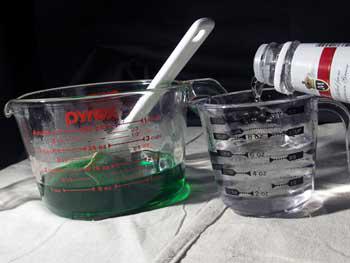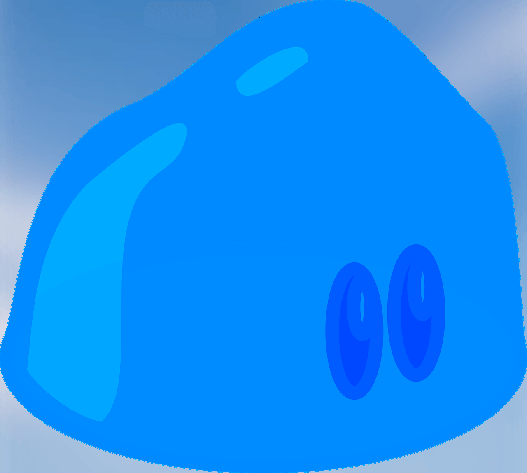Table of Contents
I found a saved file while writing my other post about gelatin and reviewing my notes. It was about a Jello-O shot experiment done by the folks at http://www.myscienceproject.org/. They used different flavours of Jello-O to test the maximum amount of alcohol and its reaction with gelatin. I’ve tried to contact them to check if they have any more experiments done, but their website is offline, so I decided to repost their fun Jello-O shots experiments. Hopefully, someone will find it helpful and exciting.
The Ultimate Jell-O Shot – Gelatin Viagra
The Experiment
This experiment’s purpose was to determine the highest possible alcohol concentration in a Jell-O shot while maintaining the gelatin’s structural integrity (i.e., gelling properties).
For our study, structural integrity was defined as the ability of the gelatin to hold its shape when removed from its container.
Recipes for Jell-O shots are often accompanied by the explanation that only a certain amount of liquor can be added. A minimum amount of water is necessary for the gelatin to gel; too much alcohol will prevent this.
How much water is enough? Or, more to the point, how much alcohol is too much? As you will see, too much is much more than we would have guessed.
What is the Ultimate Jell-O® Shot?
Why the explanation that only a certain amount of liquor can be added to Jell-O shots, the reason being that a minimum amount of water is or more to the point, how much alcohol is too much? As you will see, too much is much more than we would have guessed.
Lots and Lots of Jell-O Shots
This study utilized 80-proof (40% alcohol) vodka and Jell-O brand gelatin desserts of various flavours, with parallel tests on the regular and sugar-free varieties. To this end, we made over two dozen batches of Jell-O shots and exhausted the contents of nearly five 1.7 bottles of vodka.
We did it for science.
Our initial attempt to prepare gelatin using pure vodka was an out-and-out failure. In this experiment, we added a few tablespoons of gelatin to 4 oz. of vodka, which resulted in a grainy liquid with partially dissolved gelatin sediment that did not respond to chilling. This attempt failed for an apparent reason: Dry gelatin comprises colloidal proteins. These proteins form chains that require hot water to break them down so that they can then reform as a semisolid colloidal suspension incorporating the added water. Pure alcohol cannot be heated (without evaporation) enough to break down the proteins initially.
We then undertook the traditional method of Jell-O shot preparation, using a recipe with typical proportions as a control. (We used American standard ounce measurements for this experiment, rather than metric measurements, because Jell-O shot recipes are typically measured in ounces or cups.)

Basic Jell-O Shot Recipe
3 oz. Jell-O (one 4-serving package)
8 oz. boiling water
3 oz. cold water
5 oz. vodka
Keep pouring – you can add more vodka than that
This formula represents a modification of the recipe on the Jell-O box but substitutes an amount of vodka for a portion of the cold water initially called for. The total amount of liquid added to the solution is 16 oz. However, we observed that, when dissolved, the 3 oz. of (lime) gelatin and sugar added approximately 2 oz. to the volume of the mixture, for a total of 18 oz. Of fluid. Suppose we calculate the alcohol percentage, given that the vodka is 40% ABV, a vodka and tonic containing two oz. of vodka and 4 oz. Tonic water (13.3 usually less when ordered at a bar). A taste test of this batch confirmed this finding: the gelatin tasted like a slightly watered-down vodka-based drink.

Each of these shots contains at least an ounce of liquor.
Our next step was to increase the amount of vodka while decreasing the amount of water, maintaining a constant of 16 oz—the total liquid in the mixture. We reduced the total amount of water to 8 oz., or one cup – 4 oz. of boiling water and 4 oz. of cold water. We increased the amount of vodka to 8 oz. (one cup). After adding the boiling and cold water to the (lime) gelatin, we observed some undissolved gelatin residue clinging to the glass measuring cup. We noted that there seemed to be some undissolved sugar crystals in the liquid.
Nevertheless, this batch produced satisfactory results, with a less sweet and distinctly pronounced strong alcohol flavour. Comparing these to the original batch of Jell-O shots, we noted a slight difference in clarity: the control batch was crystal clear, while the higher alcohol batch seemed slightly cloudy. The original recipe shots also seemed to have a firmer texture and more defined edges when “broken.”
High alcohol clouds the Jell-O, but it will still set.
We continued the experiment by increasing the amount of vodka to 10 oz. At the same time, the total water was decreased to 6 oz. (4 oz. Boiling water, 2 oz. Cold water, cherry Jell-O). Again, these proportions produced satisfactory results. We then did away with the cold water altogether, dissolving three oz. of (orange) gelatin in 4 oz. boiling water (stirring for two minutes per package instructions) and then mixing in 12 oz. of vodka as if adding the cold water directed by the package. This batch produced satisfactory results. The gelatin was still firm, if a bit clouded.
Undissolved gelatin means the shots won’t set solved.
We added 13 oz. and 16 oz. to the grape and blueberry-flavoured batches, respectively. Both failed to gel firmly.
There’s Always Room for…More Alcohol
Having established that plain hot water was only necessary for the Jell-O shot recipe to dissolve the gelatin initially, we attempted to ascertain the minimum amount required. We made two batches of Jell-O using 3 oz. of boiling water to dissolve the powder. We observed a high amount of sediment in the dissolved solution and noted that neither the gelatin nor the sugar seemed to be completely dissolved, producing a cloudy, semi-gelled sludge.
Our next batch, using 4 oz. boiling water and 13 oz. vodka (lemon Jell-O), proved that the failure of the previous batches was due not to the concentration of alcohol but to inadequate boiling water to dissolve the Jell-O and sugar thoroughly. Indeed, we were able to achieve substantially higher concentrations of alcohol while maintaining a good “gel factor” as long as the powder was completely dissolved in 4 oz. of boiling water.
The Ultimate Jell-O Shot – Gelatin Viagra
The breaking point for Jell-O shots is between 19 and 20 oz of vodka.
Ultimately, we determined that the breaking point of a Jell-O shot – the point at which the gelatin began to lose its alcohol by volume- was very close to taking a straight shot of vodka.
Sugar-Free
At the same time, we were conducting similar tests using sugar-free Jell-O. The significant properties of the sugar-free compared to regular Jell-O are that the sugar-free mix has a much smaller volume (0.3 oz. per 4 servings vs. 3 oz.) of powder. It also requires less boiling water (3 oz. vs. 4 oz.) to dissolve completely and, for some reason, can ” absorb” more liquid while retaining its ability to gel. Because of these factors, it is possible to achieve a slightly higher alcohol concentration by using sugar-free Jell-O.
Sugar-free Jell-O shots hold up to 24 oz. of vodka.

The breaking point for Jell-O shots made with sugar-free gelatin came at 24 oz. Per 4-serving package dissolved in 3 oz. boiling water. The batch made with sugar-free lime Jell-O and 24 oz. of vodka remained firm after unmolding, while the batches made with 25 oz. vodka and 26 oz. vodka (both sugar-free raspberry) exhibited noticeable softening and rapid disintegration, respectively. The batch of Jell-O shots made with 24 oz. of vodka was 88.88% liquor, translating to 35% pure alcohol by volume.
Variables
To determine if any alcohol was being lost due to evaporation or boiling off during the mixing process, we measured the temperature of the Jell-O solution after the powder was dissolved in boiling water at the point just before the alcohol was to be added. After a few minutes of stirring, the hot water-Jell-O mixture had cooled to around 100F or 37.7C. Since this is well below the boiling point of ethanol (78.6C), we feel confident that no alcohol was being lost due to the heat of the solution.
Some Jell-O shot recipes suggest chilling the vodka before adding it to the Jell-O mixture. Since alcohol evaporation is not an issue, we see no advantage to this practice other than possibly accelerating the rate at which the Jell-O shots gel. Although we did not time how long it took the Jell-O to gel, in most cases, it seemed to take longer than four hours to reach maximum firmness.
This experiment used 80-proof (40% ABV) vodka only. Higher proofs of alcohol may yield different results.
So, How Did They Taste?
The “classic” Jell-O shot recipe (with 5 oz. vodkas per 3 oz. Jell-O powder) yields crisp, clear gelatin with a firm, resilient texture and mild alcohol flavour. Increasing the amount of vodka to 8 oz. reduced the sweetness and improved the taste of the alcohol noticeably, but not to the point that it was overwhelming. Up to around 14 oz. of vodka per batch, the texture of the gelatin remained relatively firm, and the taste of the vodka was strong but not unpleasant. At concentrations of alcohol higher than 14 oz., the gelatin began to seem soft and slimy, and the liquor began to overwhelm the flavouring in the gelatin.
Differences in taste and texture between the regular and sugar-free Jell-O shots were negligible, but they increased significantly as the alcohol percentage increased.
Subjectively, we found the lime and orange Jell-O to taste the best (i.e., most similar to a vodka-based mixed drink), followed by the lemon and cherry flavours. At the highest alcohol concentrations, the cherry Jell-O began to taste unpleasantly like cough syrup. We do not recommend the Berry Blue or grape flavours of Jell-O for this recipe.
Conclusions
Although the proportion of alcohol to be added to Jell-O shots is partly a matter of taste, the typical Jell-O shot recipe dramatically underestimates the amount of alcohol that can be added to Jell-O while maintaining the gelatin’s setting properties as long as a minimum amount of boiling water is used to completely dissolve the gelatin powder (4 oz. boiling water per 3 oz. packages Jell-O), an amount of 80 proof alcohol up to 19 oz. can be added, and the Jell-O will still gel. With sugar-free Jell-O, the minimum amount of boiling water necessary is 3 oz. up to 24 oz. of 80-proof alcohol can be added, and the Jell-O will still gel.
An additional finding of this experiment was that more liquid (i.e., more water) can be added to Jell-O than is recommended by the package instructions, and the gelatin will still gel. That is to say, you can add a total of 3 cups or 24 oz. of water (as opposed to the 16 oz. called for in the package directions) to a four-serving package of regular gelatin (27 oz. of water if the Jell-O is sugar-free) and the gelatin will still gel. This means adding extra water can potentially get one-third more servings from a Jell-O package.
A Word of Caution
As a word of warning to those who might attempt to duplicate this experiment at home, be aware that it produces Jell-O shots that have four or more times the alcohol content of regular Jell-O shots. They are essentially the equivalent of taking a straight shot of vodka. If you choose to test the results of your own Jell-O shot experiment by ingesting them, please do so responsibly.


